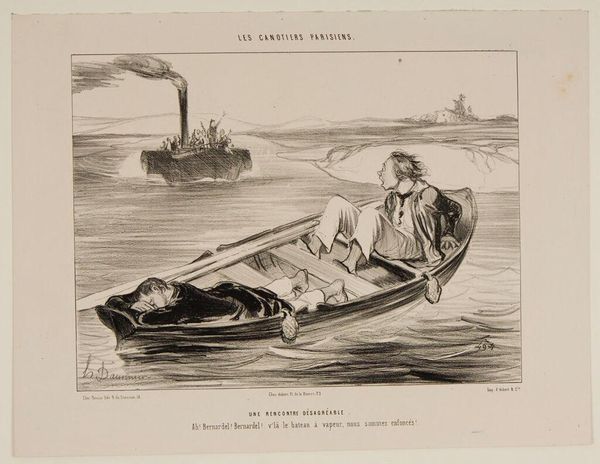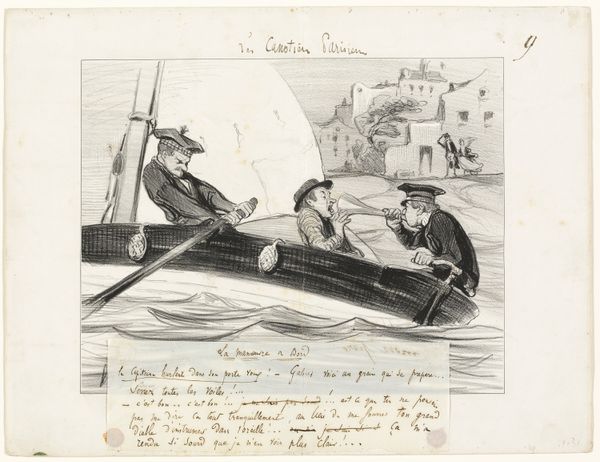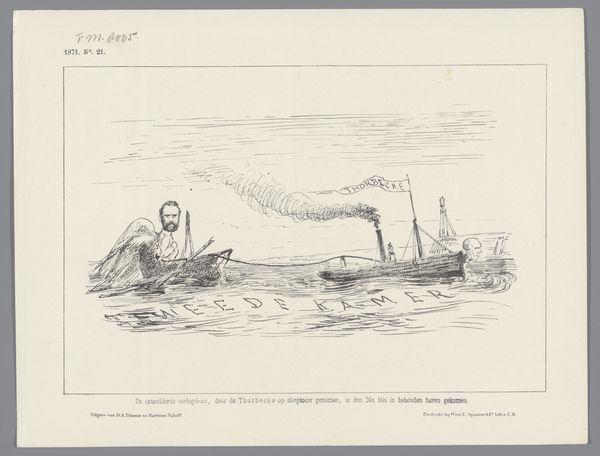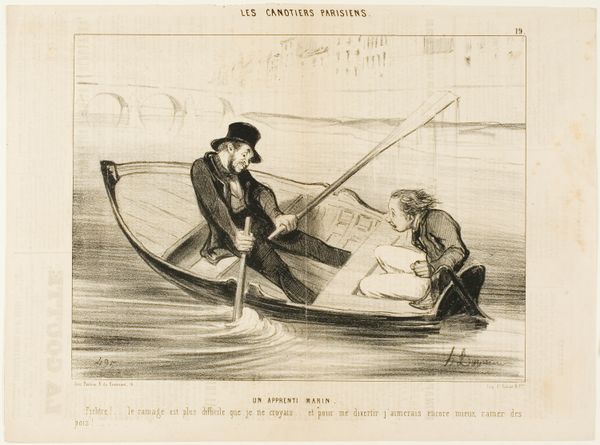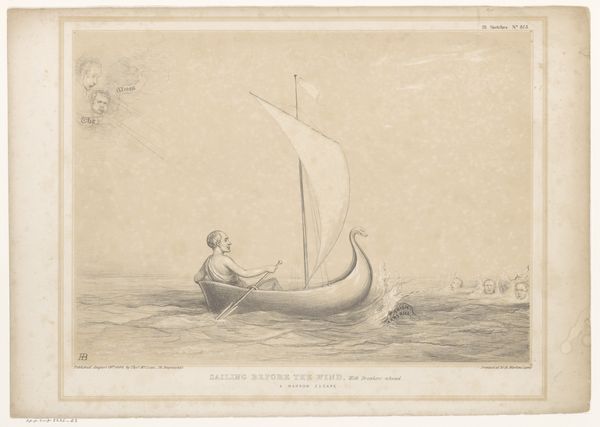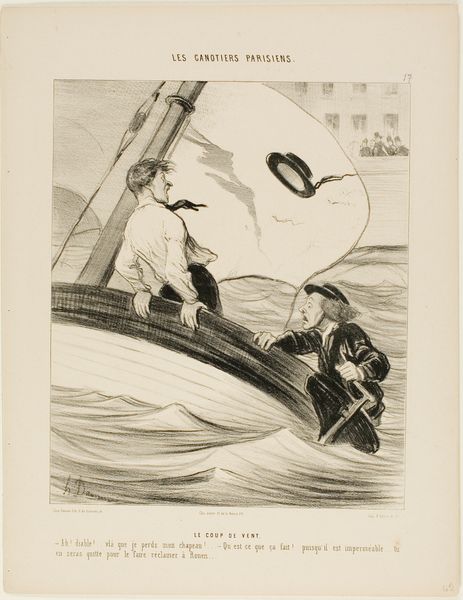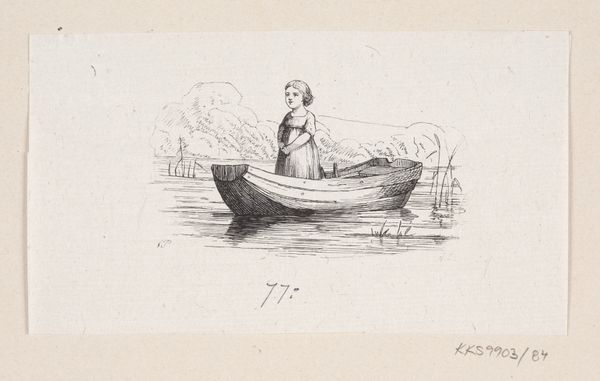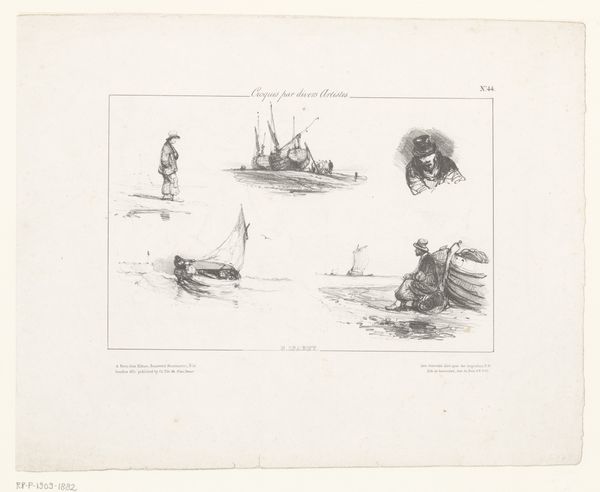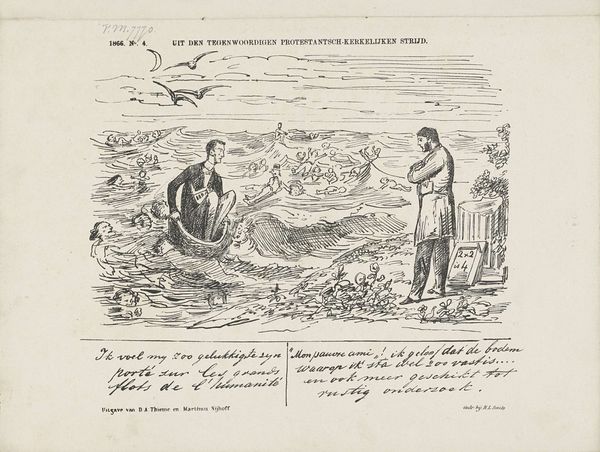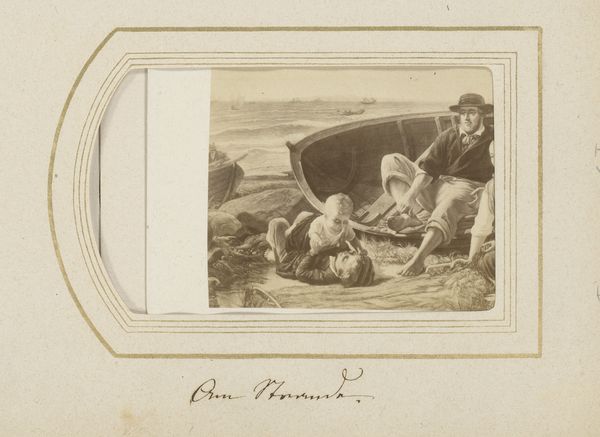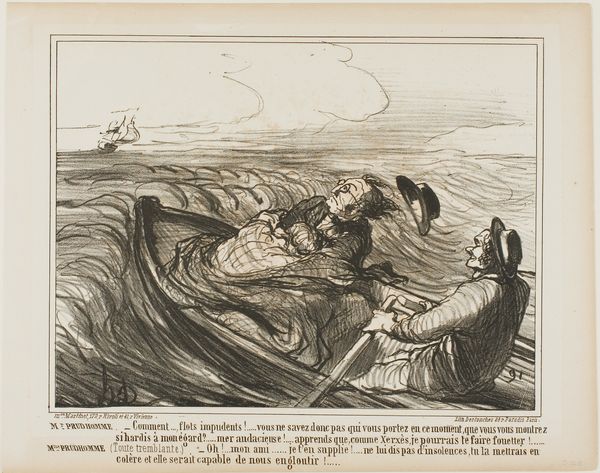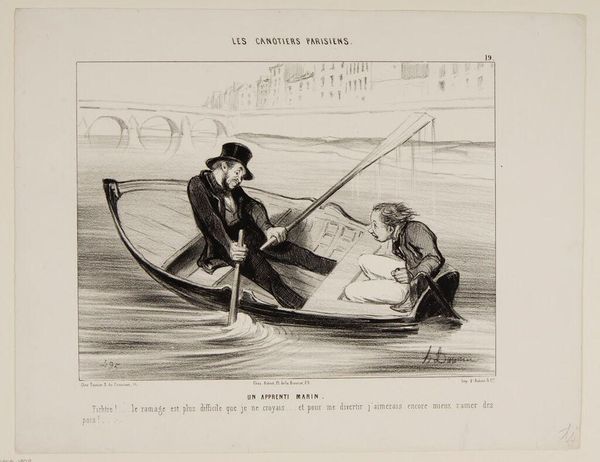
An Unpleasant Encounter, plate sixteen from Les Canotiers Parisiens 1843
0:00
0:00
drawing, lithograph, print, paper
#
drawing
#
lithograph
# print
#
caricature
#
paper
#
romanticism
#
cityscape
#
genre-painting
Dimensions: 200 × 267 mm (image); 272 × 349 mm (sheet)
Copyright: Public Domain
Curator: Look at the scene rendered by Honoré Daumier in "An Unpleasant Encounter, plate sixteen from Les Canotiers Parisiens," a lithograph created in 1843, and now held at The Art Institute of Chicago. The work illustrates a comical genre scene with elements of cityscape, typical of his romantic style, primarily composed of drawing and print media on paper. Editor: It's striking, isn’t it? There's such a sharp contrast. The one man alert and agitated in the boat, gazing outward, versus his companion slumped over, dead to the world. The light in his face indicates something between surprise and discomfort while the boatmen have succumbed to drink or indifference. Curator: Daumier, of course, was keenly interested in social commentary. As a lithographer, his work was accessible; prints circulated widely in newspapers and journals. Think of the industrialization symbolized by the steamboat churning in the background – representing technological progress intruding upon a simpler, perhaps idealized, Parisian pastime. Editor: The steamboat immediately grabs my attention. Consider the iconography, though: these figures are ostensibly pleasure boaters, but there's a definite tension between that idea and the powerful industrial vessel approaching. Could this contrast imply the disruptive influence of modernization upon traditional society and its leisured activities? Curator: It could be argued that Daumier emphasizes the production itself. Notice the lithographic process: the gradations of tone, the layering of ink to achieve depth and mood, his commentary about working class can be inferred through the image's themes and its means of mass reproduction that reached the popular presses. It's inherently about making art for a broader audience, not just the elite. Editor: Absolutely. And considering the Romantic bent, look at how the encounter might reflect inner states as well as class commentary, right? The sleeper's state could represent escapism. Is this how many Frenchmen avoid modernity? Curator: It makes one consider art and the working class of Paris itself and its complex symbols reflected in popular leisure. It's hard to separate Daumier’s critical portrayal from his mastery of materials and processes, don't you think? Editor: Ultimately, I think this work’s resonance lies in how its characters echo, how even everyday figures embody wider emotional truths for the viewer, both past and present. Curator: For me, it showcases how art reflects not just symbolic systems but material conditions and societal shifts, challenging the divide between "high" art and the working people and places that Daumier captures.
Comments
No comments
Be the first to comment and join the conversation on the ultimate creative platform.
